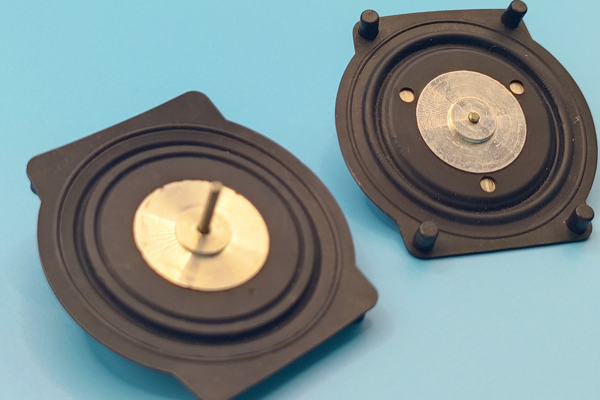Find Our Products
Manufacturer Mold Maker -Rubber or Silicone To Metal Bonding Mould|Rubber Metal Overmolding
The overmolding process involves placing the metal inserts into rubber mold cavities to shape liquid or semi-liquid rubber silicone compounds materials and metal into a desired custom molded rubber metal bonding products. Production efficiency is heavily influenced by the dimensions and structure of the metal insert parts.
- Product Details
What is Benefits of Overmolded Rubber to Metal Parts?
1.Cost Savings: Reduces assembly time (Sealing Gasket and Metal), lowers costs, and decreases inventory footprint.
2.Enhanced Performance: Creates robust, durable parts with improved performance characteristics.
3.Design Flexibility: Allows for complex part geometries that would be difficult or impossible with other manufacturing methods.
4.Improved Durability: The mechanical bond between rubber compounds and metal provides excellent durability under harsh conditions.

Overmolding Rubber Tooling Material: P20
Lead time: 7 days for prototype tooling & samples, 14 days for rubber part production mold
Mould testing: All of the moulds can be well tested before the shipments. Videos for testing the moulds are available.
Mould Type: Compression, injection, injection transfer, extrusion, silicone liquid injection
Mold Surface: Matte, high polishing or other
Mould making service: DFM before Mold design and Details mold design 3-D confirmation before mold proceesing
Rubber Molding Processes for Rubber to Metal Bonding
Surface Preparation
The surface preparation of the metal insert is critical for ensuring a strong bond. The metal surface must be clean, dry, and free from contaminants such as oils, greases, and rust. Common methods for achieving this include:
Degreasing: Using solvents to remove oil and grease.
Abrasive Blasting: Creating a textured surface that enhances adhesion.
Mechanical Grinding: Ensuring a smooth and clean surface by removing any rust or oxidation.
Primer Application
Applying a primer to the metal surface significantly improves adhesion. Primers are specially formulated chemical solutions designed to promote bonding between the metal and the rubber. This step ensures a robust interface between rubber and metal bonding.
Bonding Agent
An right adhesive or bonding agent is essential for attaching the rubber to the metal. The choice of adhesive depends on the specific application requirements. Common types include:
Cyanoacrylates: Fast-curing adhesives suitable for quick bonds.
Epoxies: Strong, durable adhesives ideal for high-strength applications.
Specialized Rubber Adhesives: Formulated specifically for rubber-to-metal bonds, offering excellent flexibility and durability.
Rubber or Silicone To Metal Bonding
Overmolding process involves placing the metal inserts into rubber mold cavities to shape liquid or semi-liquid rubber silicone compounds materials and metal into a desired custom molded rubber metal bonding products. Production efficiency is heavily influenced by the dimensions and structure of the metal insert parts.
Related Products
 4 Cav LSR Molds for Breast Pump Massage...
Price:
4 Cav LSR Molds for Breast Pump Massage...
Price:
 25 Cav Precision Rubber Injection...
Price: 700-2500USD
25 Cav Precision Rubber Injection...
Price: 700-2500USD
 Compression Molds for Rubber
Price: 500USD~3500USD/Set
Compression Molds for Rubber
Price: 500USD~3500USD/Set



